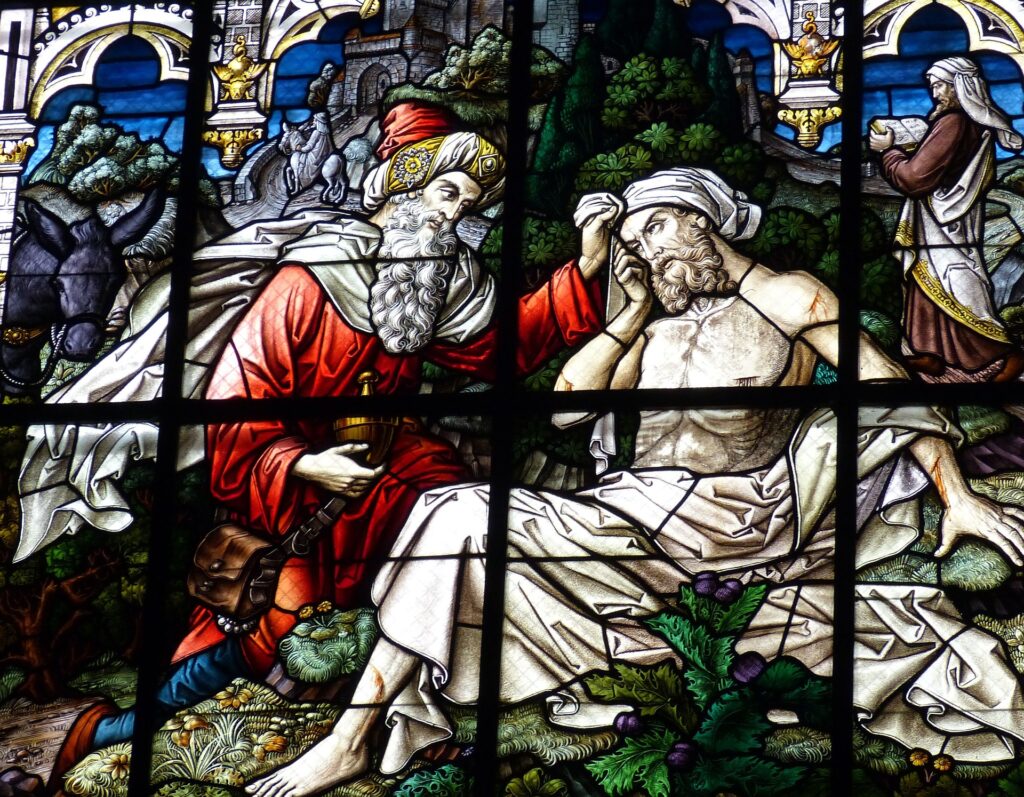Whatsoever you do for these… You do unto Me
Disability Access Inclusion Plans

All Catholic churches, religious communities, and venues must develop a Disability Access Inclusion Plan (DAIP). This plan helps to welcome and include everybody such as people with disabilities/people with other abilities, the elderly, young families, and more.
We are currently reviewing the DAIP guidelines for Catholic parishes in the Archdiocese of Perth – watch this space!
For more information on the steps for developing and reviewing a DAIP (from the Government of Western Australia Department of Communities Disability Services), please follow the link below:
An Inclusive Church is Like a Stained Glass Window
Used with permission by Deacon Tom Lambert, Chicago.

When we see a stained glass window in a church, we are struck by the beauty of the story it tells. The window usually depicts a story from scripture or an aspect of our faith. Taken as a whole, the window gives a complete picture of a particular story or inspiring moment. When we approach the window and look closely at the art, we see that the window is made up of many pieces of glass. The pieces have different shapes and sizes, some are large and some are tiny. We see that the pieces are made of different colors. Upon closer inspection, we see that the pieces have flaws in them, some have lines or cracks, other have tiny air bubbles in the glass. But taken together as a whole, the unique pieces, big and small, of various colors, and with all their flaws transcend their individuality and come together at the hand of the artist to give a dynamic story of faith. But what happens if part of the window is missing? What if we were to remove all the brown pieces of glass, or remove the large pieces, or the ones with bubbles in them? The picture would be incomplete. We would not get the whole story.
The body of Christ, the faith community, in one sense, is like a stained glass window. It portrays the story of redemption and salvation. The pieces of the story are made up of many kinds and sorts of people – young people, elderly people, married people and single people, people of color, people of different shapes and sizes, people who are divorced, people with different sexual orientation, people with various disabilities, etc…. Like the stained glass window, the body of Christ is made up of many parts. If we intentionally or unintentionally exclude, discriminate against or ignore one or more of the parts, we do not get the whole picture. We are missing the full story. The picture is incomplete.
Often people with disabilities are excluded from the body of Christ and leadership in it because of lack of access to our churches and sanctuaries or by attitudes that treat people with disabilities as less than a person. People rejected by church feel rejected by God. Parishes, rather than mirroring the cultural biases of society, should be challenging those assumptions and accepting and reaching out to all people – to open doors and minds to the gifts of all God’s people. Parishes that truly welcome and include everyone in a proactive way portray the story of redemption and salvation as a clear and beautiful image of God’s Kingdom. In places where there are barriers, either physically or attitudinally, the image of the God’s Kingdom is far less clear and the story is incomplete.
Deacon Tom Lambert
Reference: Deacon Tom Lambert. Archdiocese of Chicago Commission on Mental Illness, Mental Health Ministries (Chicago) http://www.miministry.org/support.htm

